Living within ancient walls -the painted palazzo
characters, history and new life for an ancient building
Being able to live in an historic building is one of the added attractions of life in Italy. For centuries expat writers, artists, heiresses and just regular people crossed the ocean to enjoy the lifestyle of Tuscan villas and palazzi on the Grand Canal. There has recently been a surge of interest- especially by Americans-in purchasing a property in Italy and living here, at least for part of the year.
“Furnishing a museum - Isabella Stewart Gardner’s Collection of Italian Furniture”p. 140 Portrait of Ellen Anderson Curtis by John Singer Sargent next to one of the set of Italian armchairs purchased in 1897 for 425 lire, now in the Gardner Museum, Boston. The 4th chair of the set is still in Italy.
John Singer Sargent painted portraits of many of these expats and travelers in the cool saloni of Palazzo Barbaro in Venice and later as resident artist at Isabella Stewart Gardner’s own Venetian palazzo back in Boston’s Fenway Park. Isabella filled her magnificent home with imported treasures to remind her of her Italian days.
vintage post cards of the “painted palazzo” where several modern day expats have made a new home in Italy
Palazzo Piatti and its multi-level gardens just after WWII. Note the broken windows caused by bombings. The building’s size saved it from destruction for pilots used it as a point of reference.
About 150 years ago Palazzo Piatti on the south facing side of Vetralla was the sumptuous residence of a wealthy Piedmontese entrepreneur who owned over 5,000 hectares of land with farms, fields of grain and extensive olive groves near the Lazio towns of Vetralla, Tuscania and Viterbo. The family also owned the Bisentina Island on Lake Bolsena and numerous holdings in Piemonte - including a castle-where writer Edmondo DeAmicis and statesman Count Cavour were often guests.
A recent photo of the palazzo-before the restoration of the top two floors and tower
The brightly painted southern facade of the Vetralla building was similar to the castle in Piemonte with four levels of gardens and 85 rooms plus two towers! It was so imposing and different from the local buildings that it was featured on many postcards of the time.
portrait bust of Olga by Pietro Canonica, Museo Canonica,in Villa Borghese, Rome
Around 1916 a young opera singer from Livorno, Olga Matteini met the famous sculptor and musician Pietro Canonica, 26 years her senior, who gave her drawing and painting lessons during summer days in the mountains. In 1917 and 1918 she sang the lead part in his opera “La Sposa di Corinto” staged at Rome’s Teatro Argentina. Linked by similar interests in art and music, (and maybe something more) the important sculptor/ Senator and his sickly wife, also named Olga, officially adopted the beautiful young singer in 1924.
By the next year Olga Matteini Canonica was already married to the heir of the Piatti fortune, Flaminio, and mother of a child. Their first home was the huge Palazzo Piatti with its sumptuous gardens decorated with a series of marble busts, which have since disappeared, while the original stone table and stools still decorate the gardens.
Olga set up a nursery school on the piano nobile where she taught drawing and music to local children. We cannot know what songs they sang but we can still admire the naif designs that decorate walls in the apartment and the neighboring conservatory/limonaia. These show cypress avenues, landscapes, towers, churches and a striped cat- very similar to canvases Olga painted and dedicated to her Maestro Canonica. Later works signed “Olga Piatti” or “Olga Canonica Piatti” can be seen in the Museo di Roma near Piazza Navona and the Museo Canonica in Villa Borghese.
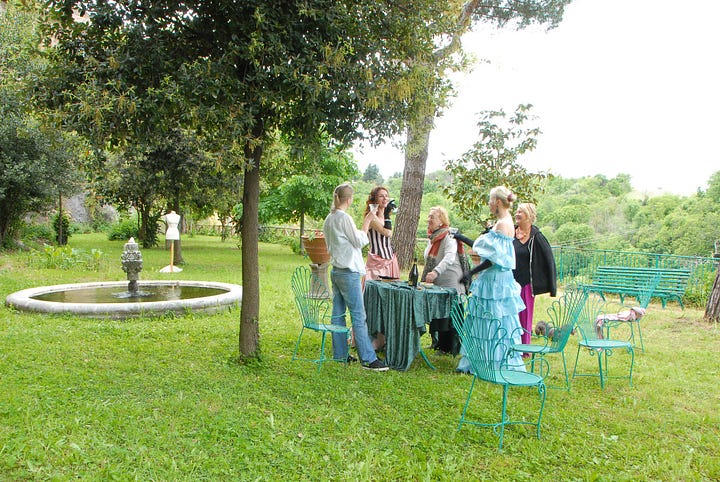

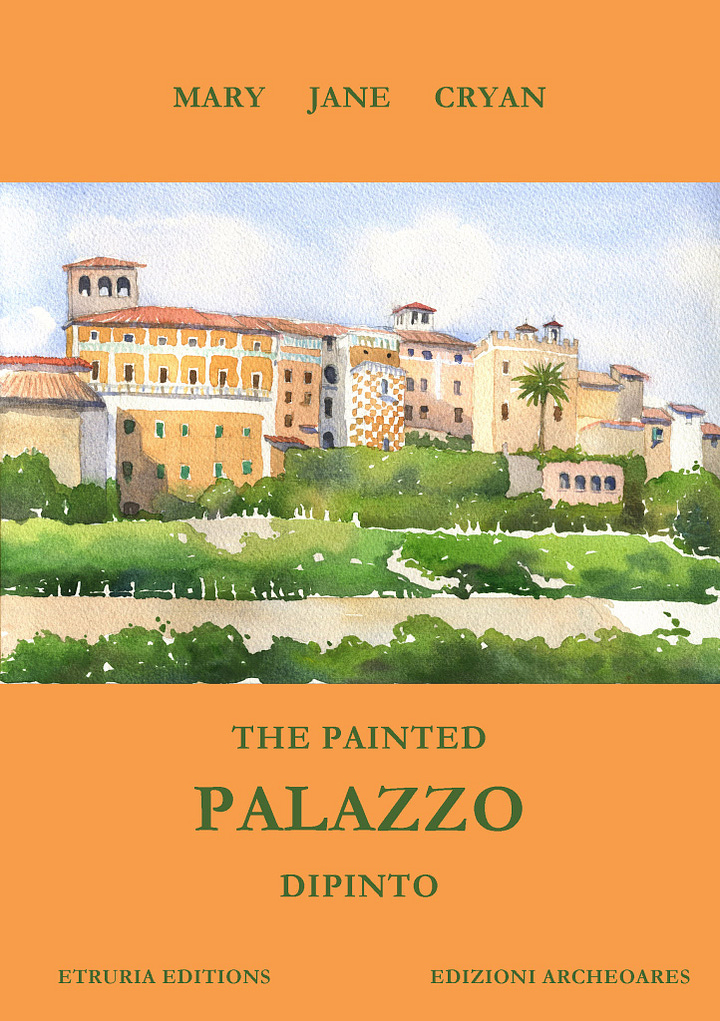
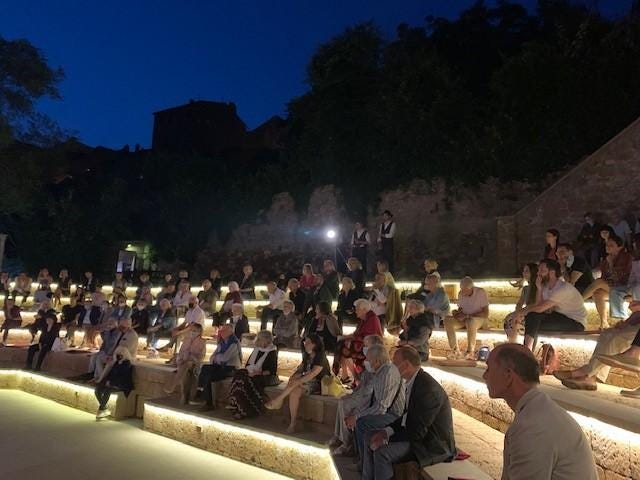
Cover art by artist Kelly Medford Click on the underlined links to learn more
After a century of neglect and degradation caused by the war and lack of maintenance by later proprietors, the painted palazzo and those who live within its ancient walls can again enjoy its luxuriant gardens and the sound of music thanks to new owners and the association Opera Extravaganza which spreads the joy of classical music and opera performances.
The whole story is available in my little bilingual book “The Painted Palazzo-Palazzo Dipinto “, along with more recent discoveries about the Etruria/Tuscia area. Read reviews on the Books page of my website or write your own review here!
Relaxing on the fourth armchair -the other 3 are in the Gardner Museum- and sending Thanksgiving greetings to readers who celebrate!
Thanks to Etta Madden for the photo
If you would like to own (or give as gift) one of the few copies of the book still available - contact me. Price is only 10 euro plus first class postage/raccomandata to wherever you are. To addresses in Italy=4,70 euro. Available in museums, historic sites and selected bookshops only in the Viterbo area.
Invitation to those in the area-On Friday afternoon, 5 pm , December 6th I will be giving a presentation in Italian at the Vetralla Library-copies of my books will be available.





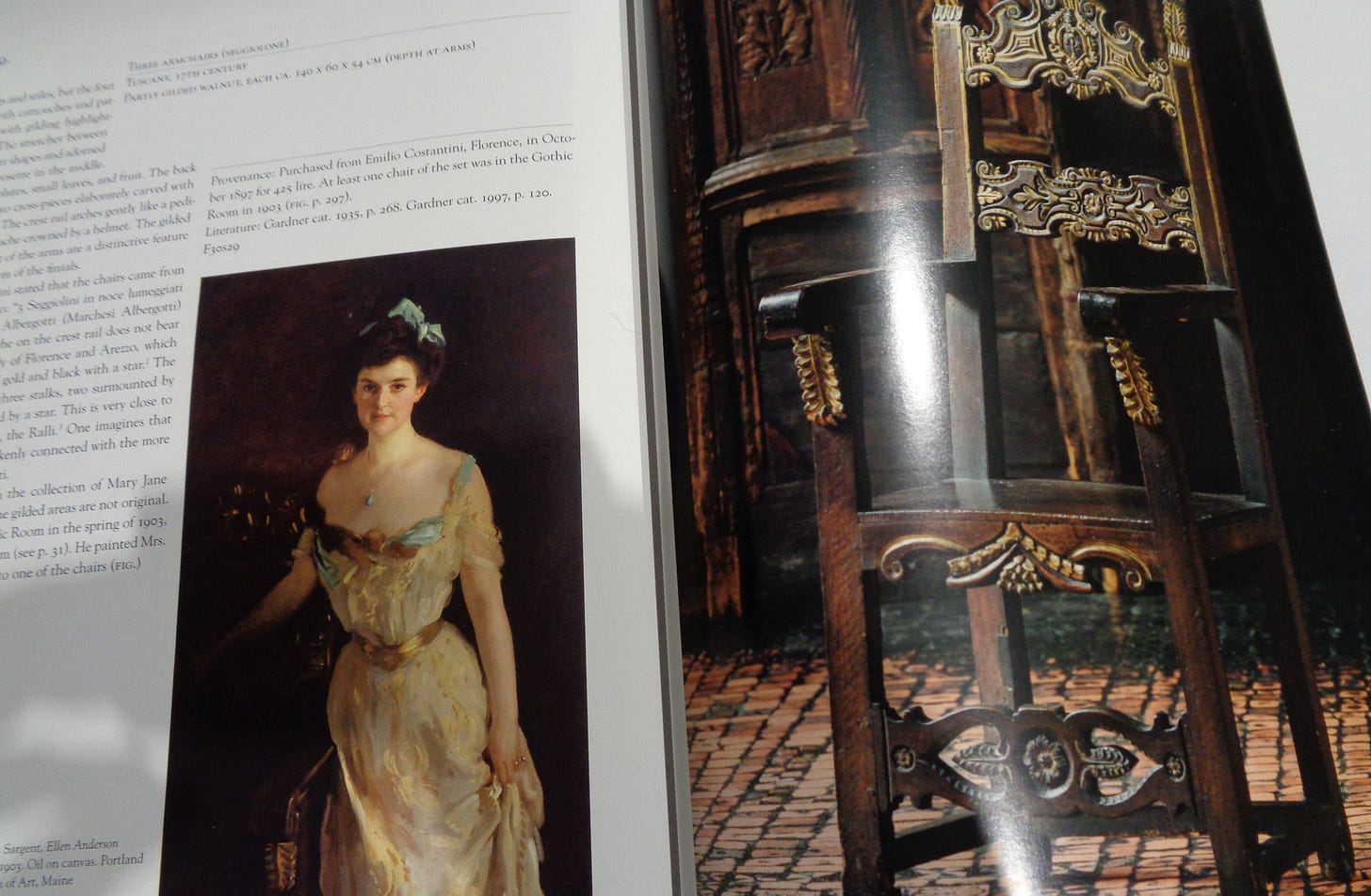
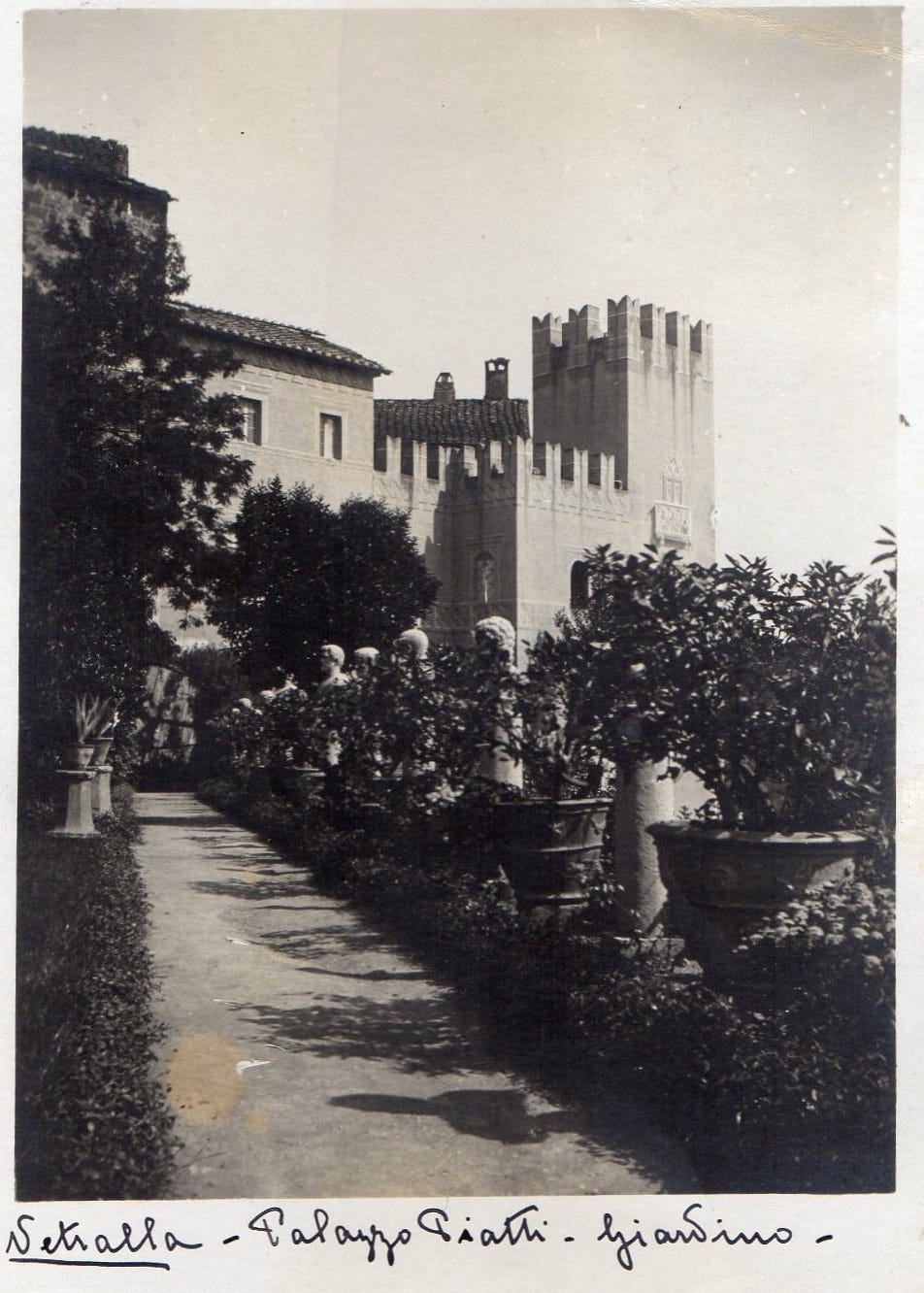
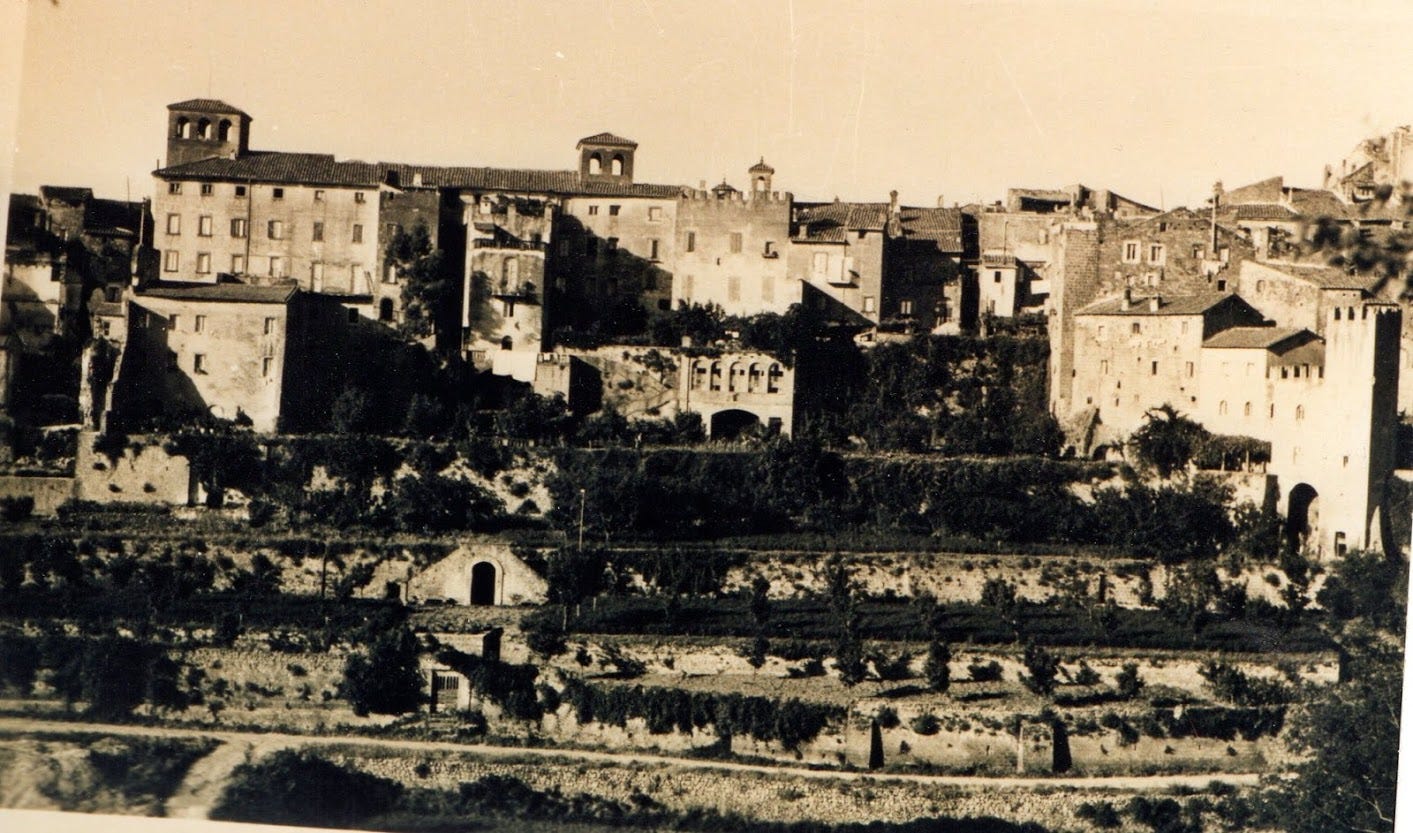
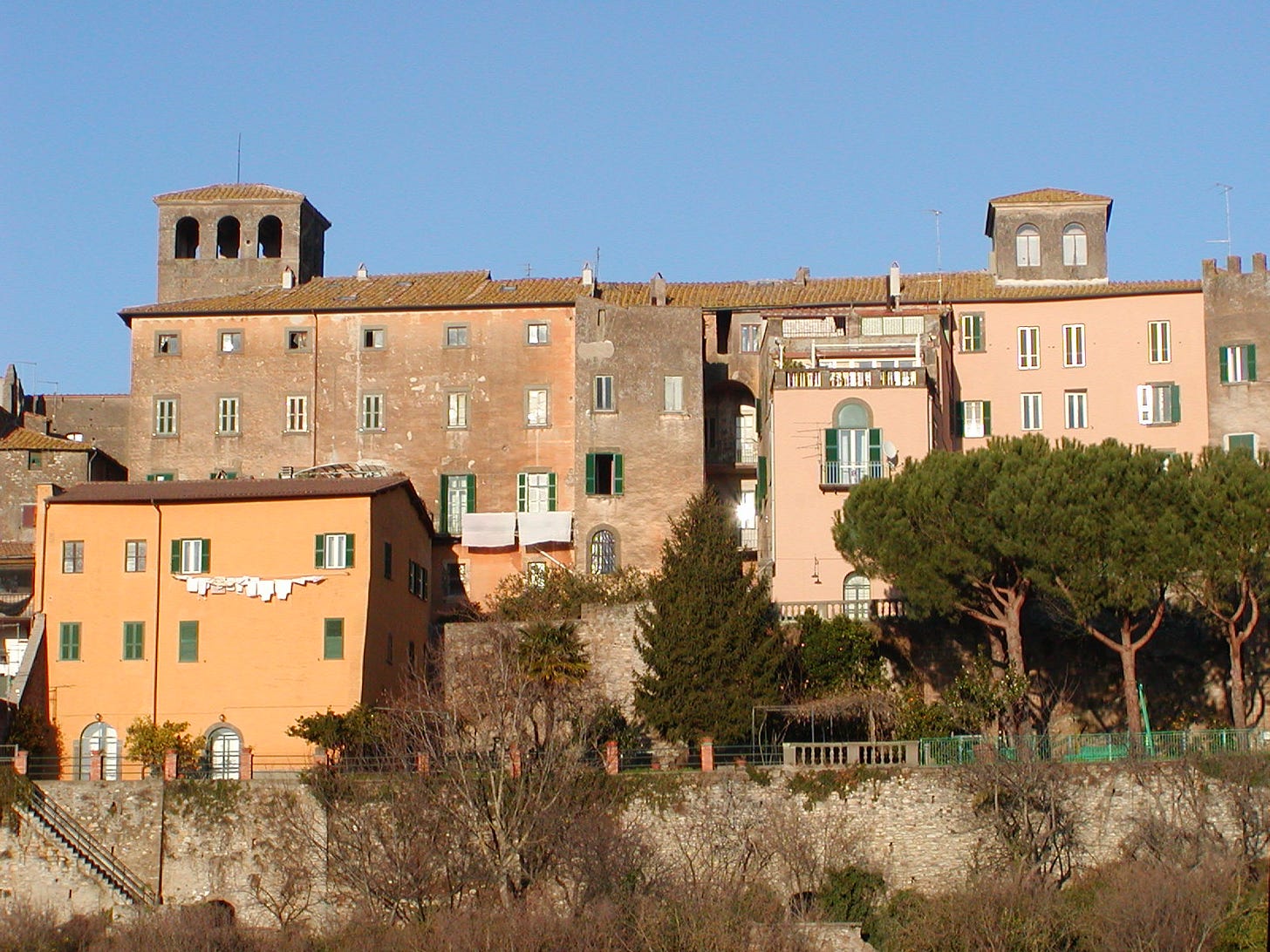
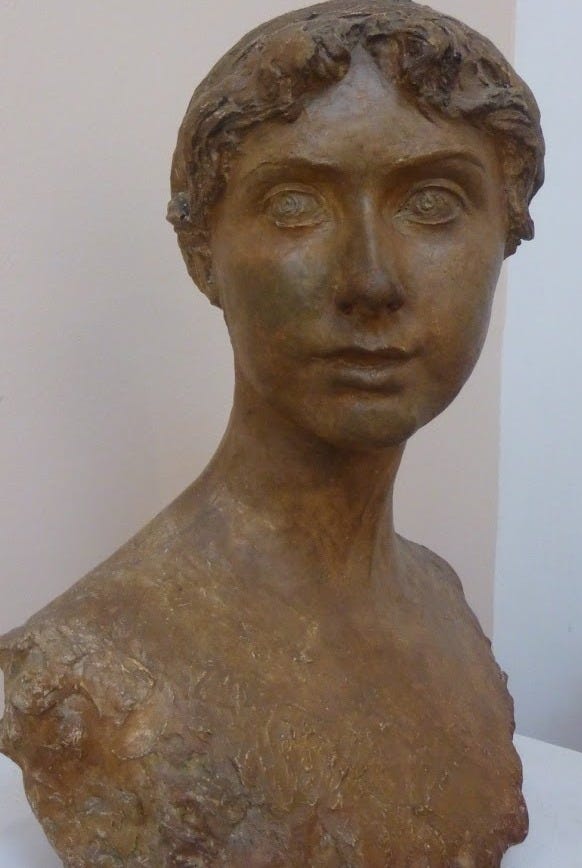
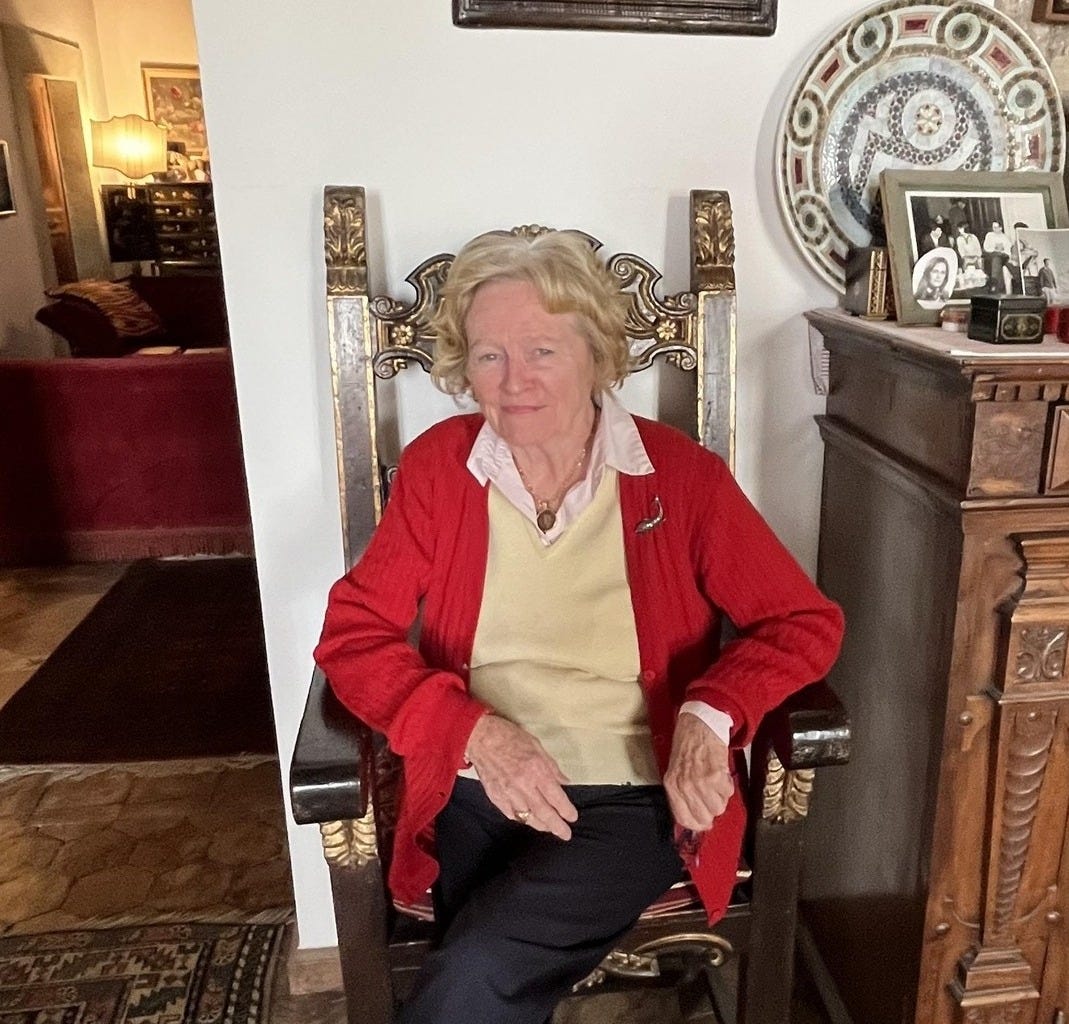
Such a remarkable place you live in--- it's unforgettable. And what a history!
I’m sorry I will miss your talk next week! Happy Thanksgiving!